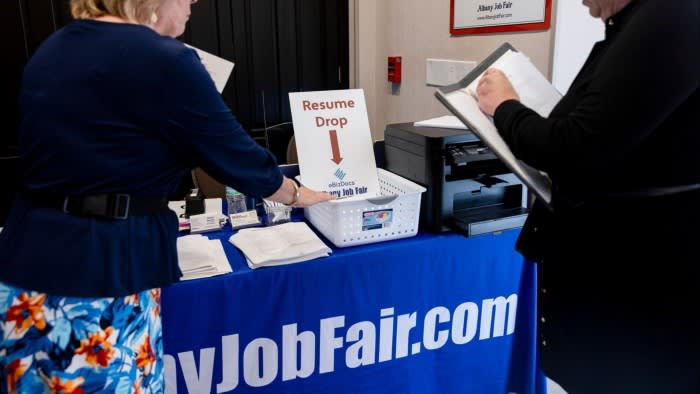Unlock the White House Watch newsletter for free
Your guide to what Trump’s second term means for Washington, business and the world
Private employers in the US shed the largest number of jobs in two and a half years in September, according to unofficial data that investors are relying on due to the government shutdown.
Private sector employment decreased by 32,000 last month, payrolls processor ADP said on Wednesday in its national employment report, confounding economists’ expectations for the addition of 50,000 roles and triggering a rally in US Treasuries that sent yields lower.
Investors and policymakers are paying closer attention to privately produced economic reports because the government shutdown, which began early on Wednesday, means the Bureau of Labor Statistics is not expected to publish its closely watched jobs figures on Friday.
September’s contraction in private employment was the largest since March 2023 and follows a significant reversal of the previous month’s figures. ADP revised the August number lower to 3,000 from an initial reading of 54,000, marking the first back-to-back monthly drop since the summer of 2020.
A process ADP uses to benchmark its data against comprehensive US government figures had pushed the September reading down by 43,000 jobs. However, Wall Street economists noted that despite the revisions, the report underscored the cooling in the labour market.
“ADP was weak across the board,” JPMorgan told its clients, noting that the data pointed to “increasing negative momentum” in the labour market and potentially a soft official jobs report this week.
The US Federal Reserve said last month that risks to employment were tilted to the “downside” when it decided to cut interest rates at its most recent meeting. Markets are expecting further rate cuts in coming months, as worries about the jobs market outweigh risks that President Donald Trump’s tariffs will boost inflation.
The yield on the two-year US Treasury, which is sensitive to interest rate expectations, dropped as much as 0.07 percentage points following the ADP figures to a two-week low of 3.54 per cent. Yields recovered mid-morning after data showed US manufacturing activity held steady in September, according to an index prepared by the Institute for Supply Management, but returned to session lows in the afternoon.
Wall Street’s benchmark S&P 500 index recovered from an early drop of as much as 0.5 per cent to close 0.3 per cent higher at a record.
The ADP report is not typically considered a reliable predictor of non-farm payrolls growth, but it forms a part of the constellation of alternative data sources that will be in focus as lawmakers spar over funding the US government.
Recommended
Goldman Sachs economists said the availability of these other reports meant “markets will not be running fully blind on the data trajectory, and will likely also lean more heavily on private data as substitutes for the federal data”.
ADP’s report showed that small and medium-sized businesses shed roles in September, though this was partially offset by hiring by groups with at least 500 employees.
Stephen Brown, Capital Economics deputy chief North America economist, described the trend as “concerning” and noted that private employment in most sectors contracted.
“The breadth of those sector losses gives support to the doves [on the Fed’s rate-setting panel], who have been concerned about the potential for labour market conditions to suddenly deteriorate,” Brown said.


